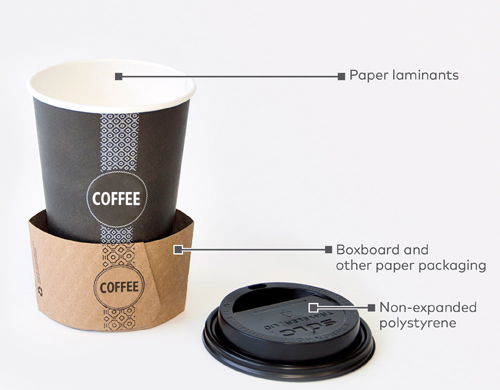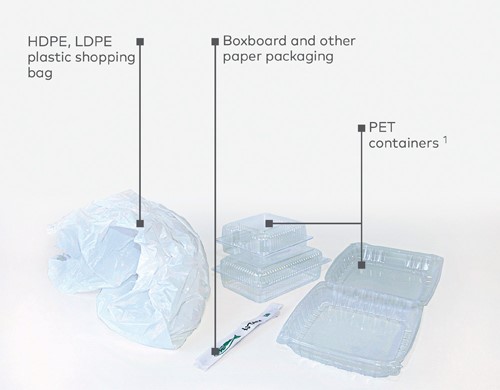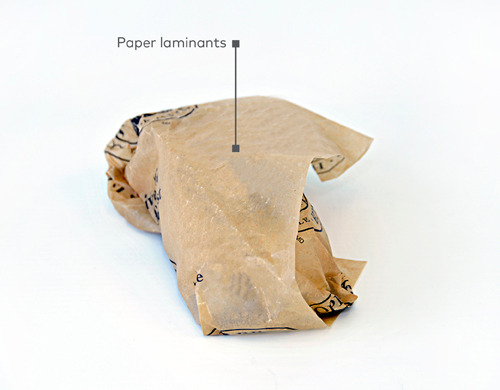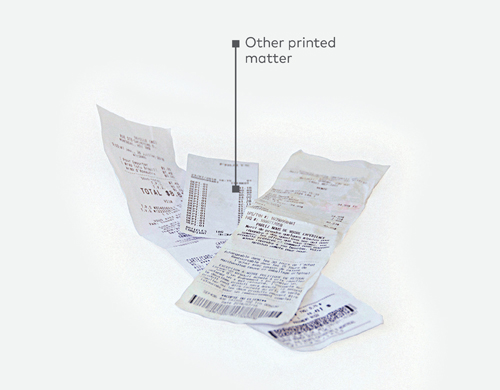Glossary for restaurants
Before you begin the reporting process, get up to date on key concepts by consulting the glossary for restaurants.
Containers and packaging added at the point of sale
Containers and packaging added at the point of sale include all the containers and packaging provided to a consumer to protect or transport a product (e.g. plastic bag). These containers and packaging are provided to the consumer by the point of sale.
Primary packaging
Primary packaging is the packaging that contains the product being sold. It is therefore in direct contact with the product. For example, the tube that contains toothpaste is primary packaging. Primary packaging must be reported.
Deduction for on-site consumption
When the containers and packaging included with a product only intended to be used or consumed by a consumer at the distribution or retail site are managed at the site itself, they are excluded from the calculations to determine the total contribution. This deduction is not applicable to containers and packaging provided with food at a drive through or as takeout.
Deduction for CP&PM ultimately intended for industrial, commercial and institutional establishments
The containers, packaging and printed matter intended for a final consumer that is an industrial, commercial or institutional establishment are excluded from the calculation to determine the total contribution and therefore do not need to be reported.
Methodology to facilitate the reporting process
It is important to explain the methodology used to collect or estimate your data as part of the reporting process. In this section, you will find everything you need to develop your own work methodology.
Use the dedicated page in the reporting portal to detail your methodology.
Methodological steps
- List all the products sold during the reporting year.
- Determine those responsible for each product
- For take-out, drive-through and delivery food orders, you must include all the containers, packaging and printed matter related to your products and those for which you are the first supplier in Québec. Identifiez les composantes de chaque type de repas visées.
- Identify the components of each type of designated food order.
– For example, for pizza delivery, report the weight of the pizza box, pizza saver that prevents the box from touching the top of the pizza, receipt given to the consumer and all other designated materials.
– For example, for take-out rotisserie chicken, report the weight of the box, plastic tie around the box (if applicable), aluminum foil, polystyrene tray, sauce and salad containers and lids, disposal utensil packaging and all other designated materials.
- Include the materials added at the point of sale. For example: receipts and invoices, shopping bags, promotional material, leftover bags, etc.
- Include all marketing-related printed matter. For example: take-out menus and leaflets, inserts, envelopes (packaging) for gift cards, etc.
- List the products distributed free of charge at special and promotional events.
- If you sell or order food products under your brand (in grocery stores or at the restaurant): – List all the products sold under your brand in the reference year; – Determine those responsible for each product.
- Indicate the data sources used to complete your report. For example: real unit weight determined manually or provided by the manufacturer, supplier or printer.
Deductions
- All containers, packaging and printed matter consumed and disposed of on site.
- Returns on orders
- All refundable containers. For example: soft drink containers, etc. Note, however, that any containers or packaging accompanying these products must be declared (for example, the cardboard box containing the returnable bottles).
- Containers identified by a brand owned by a company with a place of business in Québec (e.g. soft drink cups).
- Containers and packaging meant for a final consumer that is an industrial, commercial or institutional establishment.
- Describe your activities and your products and list the number of restaurants or establishments you operate in Québec.
- Mention the changes since the last report.
Explain any considerable variations between the current quantities you are reporting and those included in the last report.
For example:
– Increase or decrease in sell
– launch of new products
– restaurant openings or closings;
– acquisition or sale of banners
– reduction in packaging
– implementation of new measures
– change in materials
Reporting the containers, packaging and printed matter you put on the market in Québec each year can be a time-consuming exercise. But the right tools make it easier!
Examples of designated materials to include in your report
| Takeout | |
|---|---|
| Products: | To be classified in: |
|
Food and beverage containers |
– Other plastics, polymers and polyurethane |
|
Bags |
– HDPE, LDPE plastic shopping bags |
| Printed matter | |
|---|---|
| Products: | To be classified in: |
|
Sales slips |
– Other printed matter |
| Advertising material | |
|---|---|
| Products: | To be classified in: |
|
Delivery menus |
– Other printed matter |
|
Advertising inserts, flyers and coupons |
– Newsprint inserts and circulars |
| Toys | |
|---|---|
| Products: | To be classified in: |
|
Plastic bags |
– Plastic HDPE and LDPE films |
Examples of containers, packaging and printed matter made up of several materials subject to a fee
Some containers, packaging and printed matter raise a few questions. In what material class should I report the bottlecap, label or lid? A picture is worth a thousand words!
Common errors by restaurants
Some containers, packaging and printed matter raise a few questions. In what material class should I report the bottlecap, label or lid? A picture is worth a thousand words!
Making keying and calculation errors
| Examples and explanations | Tips |
Entry of incorrect or inexact data or data with the decimal in the wrong position |
For example, if a company sells a pack of 24 bottles of water in a cardboard box ultimately intended for the consumers, it must report the box and 24 times the weight of the plastic bottle. The error is much more common when entering data for boxes of multipacks. For example, when a box contains four packs of six bottles wrapped in plastic, 1 cardboard box (if intended for the consumers), 4 overpack films and 24 bottles must be reported. |
Subtracting ineligible deductions
| Examples and explanations | Tips |
|
|
Not reporting materials from multipack containers and packaging or reporting materials in the wrong category
| Examples and explanations | Tips |
|
|
Not reporting advertising material
| Examples and explanations | Tips |
|
|
Not reporting the sales packaging generated through e-commerce
| Examples and explanations | Tips |
|
|
Reporting non-designated materials (placemats, napkins, etc.)
| Examples and explanations | Tips |
Because paper placemats, plastic utensils and plastic straws are made of materials similar to those used in containers and packaging, some restaurant operators wrongly think that the items must be included in their calculations. However, paper placemats and plastic utensils and straws are not considered containers, packaging or printed matter under the regulations. |
|




